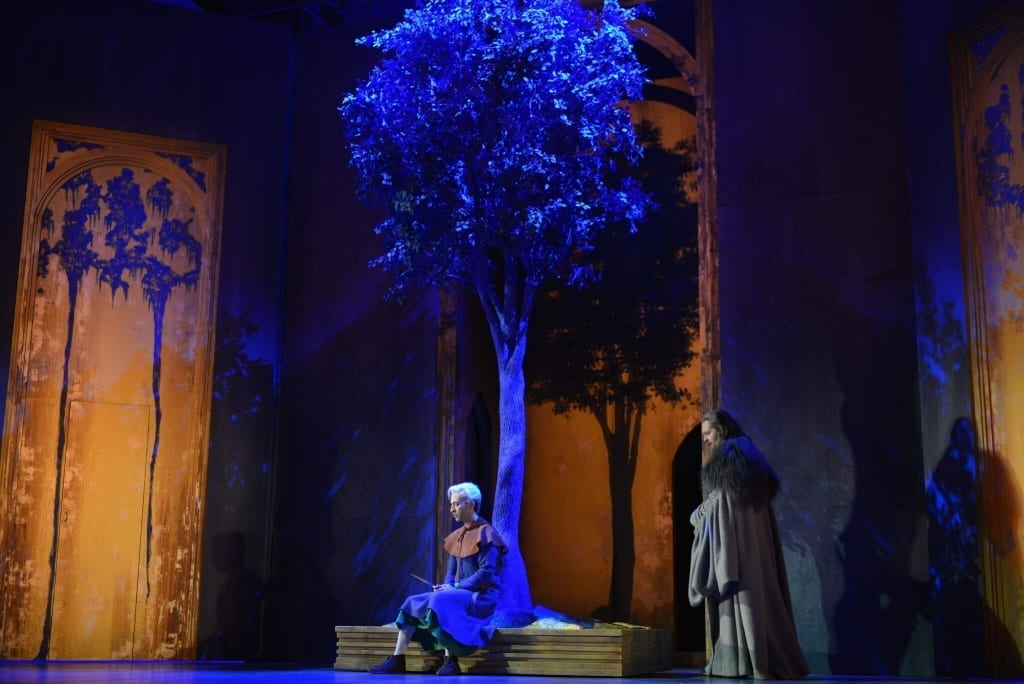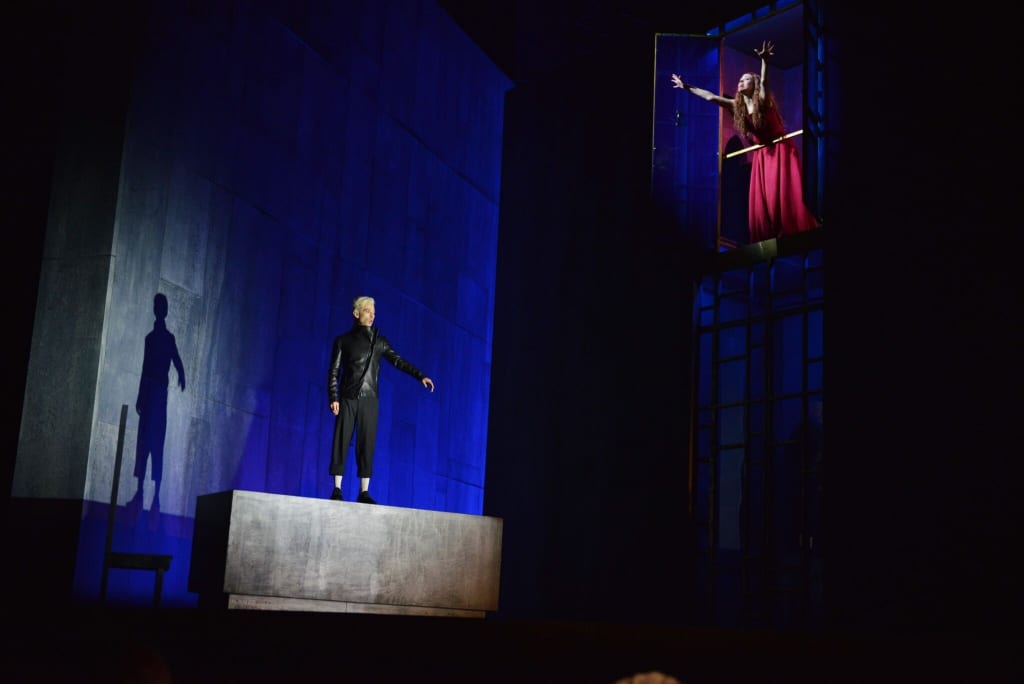Disclaimer: the highly successful premiere production of George Benjamin’s opera Written on Skin (2012) is etched firmly in my memory. All the more striking, then, that Opera Philadelphia’s new production directed by William Kerley, with ingeniously designed sets and costumes by Tom Rogers, opens up so many compelling vistas on this provocative piece.
Martin Crimp’s libretto blurs any coherent sense of time, and begins by weaving regressive impulses to destroy the natural world into a modern or possibly futuristic context. The central story is then enacted as a flashback or conjuration of a medieval tale about a loveless marriage between a man (named solely the Protector) and his wife Agnès, whom he treats as his property. The Protector hires a young man (named the Boy) to document his wealth and power in the form of a book illuminated with elaborate imagery. Agnès seizes the opportunity to explore her sexuality with the Boy, and forces him to inscribe their illicit lovemaking into the book for her husband to see.
As the Boy, as well as one of three singing roles that double as characters named Angels (together with a few non-singing extras), Anthony Roth Costanzo animates Agnès when she is first brought onstage lying still, in virginal white, atop a solid grey table that bears suggestion of a sacrificial altar. The framing set–a giant box–also appears to be made of unyielding stone, as does a multi-story cube set on a central revolve, which eventually opens on various sides like a 3-D book to reveal segments of the medieval story (vividly lit by Howard Hudson). Costanzo’s extraordinary tone and stylized demeanor seamlessly adjusts the cool and knowing attitude of the Angel that curates Agnès’ story to become the naïve young artist that fires her curiosity.

Mark Stone’s Protector comes across as vocally strong, and genuinely obtuse at first, perhaps even confounded by the relationship his wife seems to want from him. But when his ire is stoked, and he sets out to destroy the Boy, the group of Angels became his willing henchmen and he viciously tears his victim’s heart out from the limp frame placed atop the grey slab. As singing Angels, and in the supporting role of Agnès’ sister Marie, Kristina Szabó was superb alongside Alasdair Kent as her husband John.
Lauren Snouffer’s passionate stirrings reveal themselves not only in her generous, resilient voice but also in her tour de force physical performance. Especially memorable moments include her standing atop her husband’s bed demanding that he kiss her, and the end, when she becomes aware that he has served her lover’s heart to her for dinner. When he demands she affirm her obedience to him and eat the meal, she mounts the slate table with defiantly animalistic energy.
Agnès’ transformation is traced by the gradual staining and deepening colour of her garments, from blue to purple and ultimately a simple blood red undergarment for the final scene. The Boy’s realm is one of colour. The garden setting in which the Protector visits the Boy, who lies and claims he is having an affair not with Agnès but her sister Marie, is breathtakingly beautiful. Saturated in indigo and gold, the idyllic space is shattered by an appearance of Marie in bright red, in which she reveals her base material orientation. Such a richly layered exploration of colour, ink, influence, and illuminated worlds that are simultaneously exquisite yet flawed provides a rich visual complement to Benjamin’s exacting, refined, and often supercharged musical atmosphere, which conductor Corrado Rovaris shaped with great skill.

